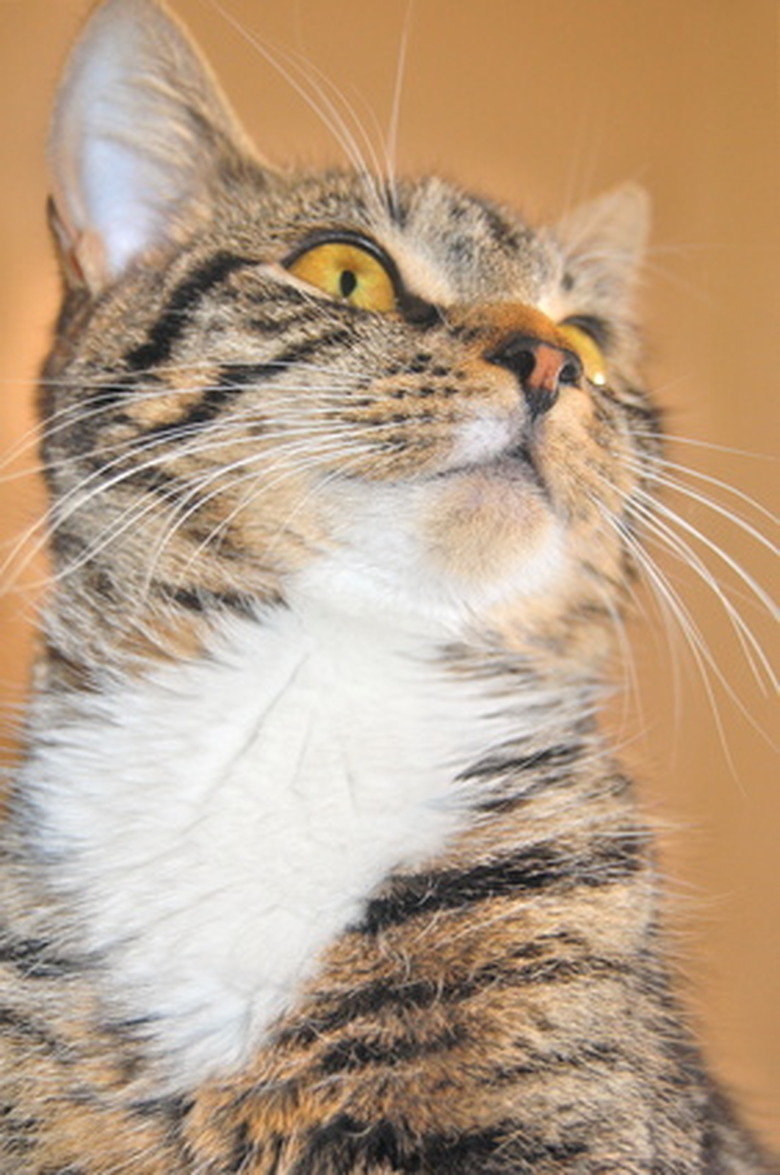Signs & Symptoms Of End Stage Liver Failure In Felines
Like humans, felines depend on their livers to remove toxins from their bodies, whether from poisons, disease, inflammation, heart failure or trauma. The liver is easily damaged, but it also has the ability to regenerate. When a cat has end-stage liver disease, it means the liver is severely damaged and may not be able to regenerate. You will see several obvious signs and symptoms of end-stage liver disease in your cat.
Jaundice
Jaundice
Jaundice is a yellowing of the skin and other tissues caused by liver disease. It comes from a substance called bilirubin, which is caused by the breakdown of red blood cells. Check the whites of your cat's eyes and its gums. Part the fur and look for yellowing of the skin, especially at the base of the ears.
Swollen Stomach
Swollen Stomach
Your cat may suddenly have a hugely distended belly without any other symptoms of weight gain. You may even see that other parts of its body are getting thinner. This happens when liver disease interferes with the circulation of the stomach, and fluid accumulates. A swollen stomach can also be the sign of other serious feline diseases, so make sure your cat sees a veterinarian immediately.
Changes in Digestion and Elimination
Changes in Digestion and Elimination
Cats often experience digestive upset when in end-stage liver failure. It may refuse to eat or vomit when it does eat. You may notice that its feces and urine are discolored. The feces may be pale gray, and the urine may be dark. Both symptoms are caused by changes in the bile produced by the liver. If you notice any change in your cat's eating or elimination habits that lasts more than a day or so, have your cat seen by a veterinarian.
Always check with your veterinarian before changing your pet's diet, medication, or physical activity routines. This information is not a substitute for a vet's opinion.
